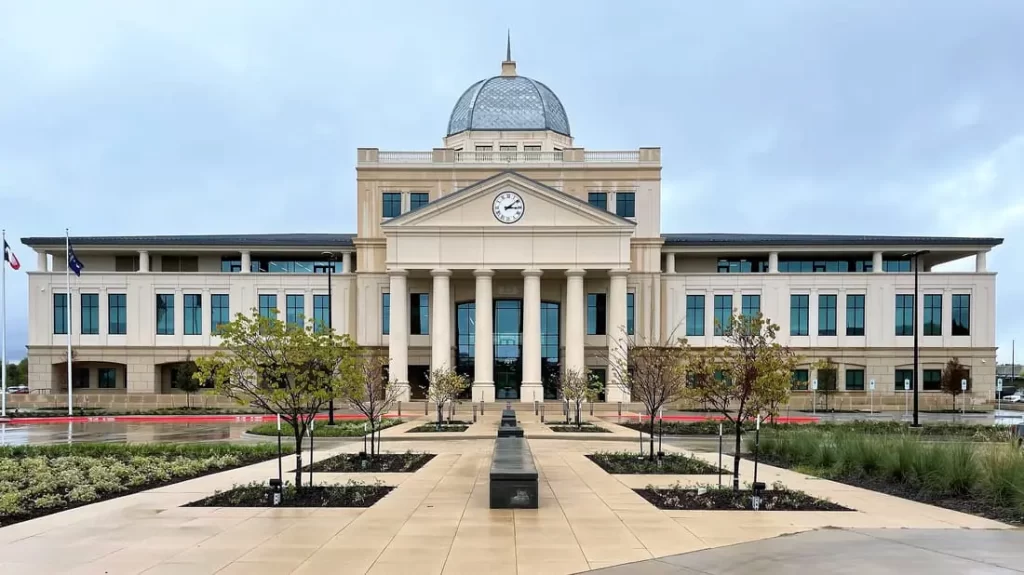Texas has four main types of local government: cities, counties, independent school districts, and special purpose districts.
Counties
Counties are the oldest form of local government in Texas and are present in every part of the state. In total, there are 254 county governments in Texas, each with its own chief executive (called a county judge), commissioners court, and other elected officials like the tax-assessor collector, sheriff, constables, and county clerk.
Counties are responsible for administering elections, collecting taxes, operating jails, and certain other duties.
Municipalities (Cities)
In urban areas, municipal governments operate alongside county governments, offering a set of complementary services, with some duplication (county sheriffs and city police have overlapping responsibilities, for example), and levying their own taxes.
The largest cities in Texas have large and complex bureaucracies and large numbers of employees, whereas small cities employ only a handful of employees.
Although cities are geographically smaller than counties, and operate within county boundaries, they are not technically subordinate to county governments. Rather, cities and counties operate independently, albeit often in close cooperation.

Independent School Districts
The third major form of local governments Texas is the independent school district (ISD), which relies heavily on local property taxes. School districts are managed locally but are subject to state laws and regulations governing curriculum, teacher pay, standards, etc.
School districts compete with a growing number of public charter schools in certain areas—a trend that has diminished their relative importance in some jurisdictions—but they remain the dominant mode of public education in the state.
Special Purpose Districts
The fourth type of local government in Texas are special districts, which fulfill a wide variety of specialized functions. These include:
- Crime Control and Prevention Districts
- Emergency Services Districts
- Hospital Districts
- Library Districts
- Municipal Utility Districts
- Groundwater Conservation Districts
The sheer number and variety of special districts has prompted some calls for reform and consolidation. In addition to the ones listed, Texas has junior college districts, navigation districts, transit authorities, airport improvement districts, and many others.
Hierarchy Among Texas Local Governments
For the most part, there is no hierarchy among the different types of local government in Texas, even when they have overlapping geographic boundaries.
In some cases, however, municipalities and cities can partly control or exercise oversight over certain special districts, such as transit authorities, hospital districts, and crime control districts.
Additionally, local governments may form partnerships (inter-local agreements), which they use to share resources and services. For example, an independent school district may cooperate with a county sheriff’s office to improve security at school campuses, or two neighboring cities may form an agreement to cooperate in providing mass transit services.
All local governments are subordinate to the state government, and are therefore called “political subdivisions.” As such, local governments can be eliminated, restructured, or regulated by the State of Texas, either through administrative means, or through statutory or constitutional changes.
Decentralization in Texas Local Government
Since the birth of the modern state of Texas in the 1830s, Texan politicians have distrusted centralized power and preferred to distribute governmental functions among many different elective offices, commissions, and boards, both at the state and local levels.
This has led to a proliferation of local governments, sometimes with many elective offices (such as the plural executive form of county government), decentralizing and democratizing power.
Although this system has certain benefits, critics have complained of waste, duplication of services, and a lack of accountability and oversight due to the dizzying number of independent government institutions operating in different parts of the state.
